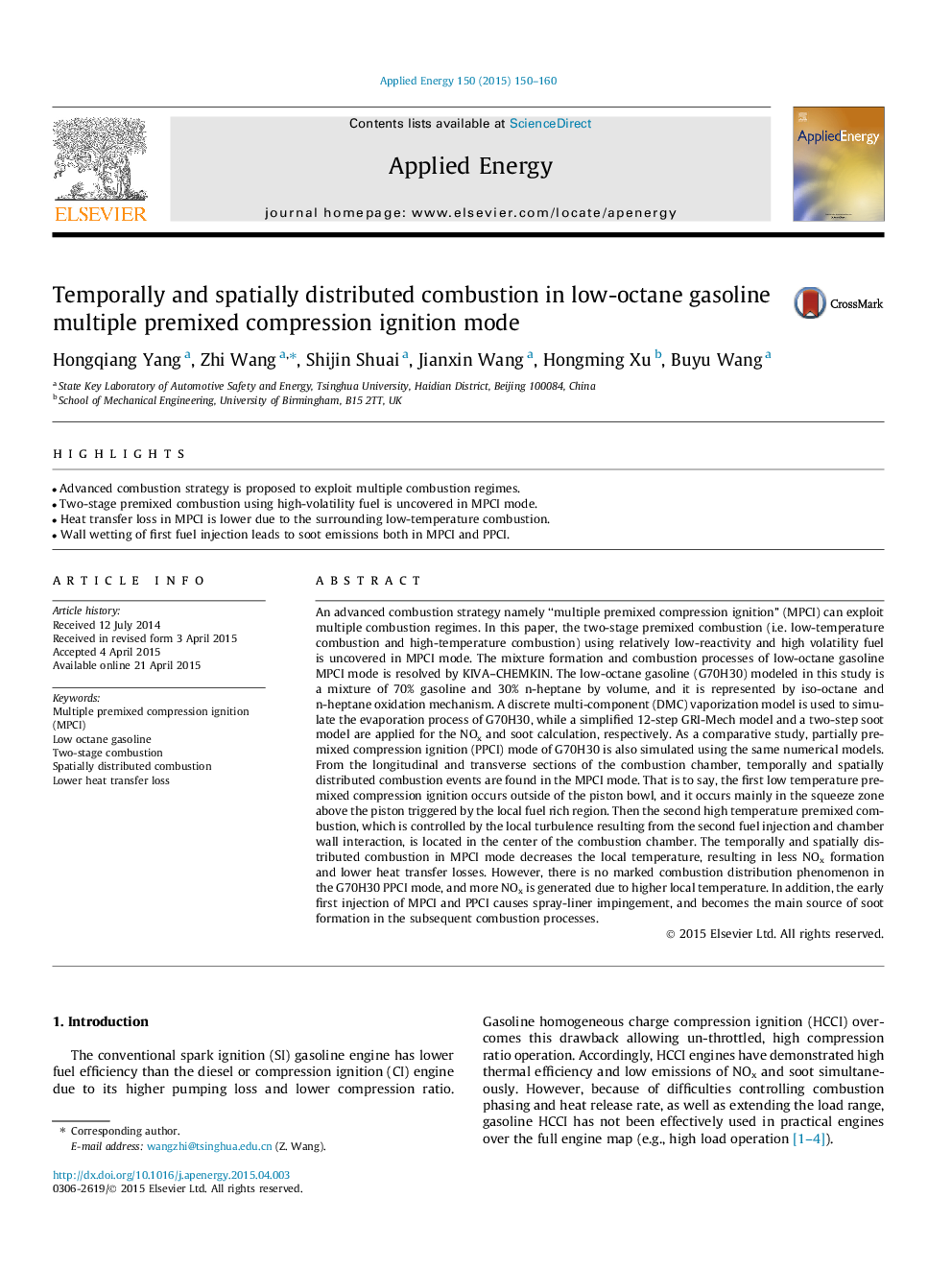| کد مقاله | کد نشریه | سال انتشار | مقاله انگلیسی | نسخه تمام متن |
|---|---|---|---|---|
| 242514 | 501875 | 2015 | 11 صفحه PDF | دانلود رایگان |
• Advanced combustion strategy is proposed to exploit multiple combustion regimes.
• Two-stage premixed combustion using high-volatility fuel is uncovered in MPCI mode.
• Heat transfer loss in MPCI is lower due to the surrounding low-temperature combustion.
• Wall wetting of first fuel injection leads to soot emissions both in MPCI and PPCI.
An advanced combustion strategy namely “multiple premixed compression ignition” (MPCI) can exploit multiple combustion regimes. In this paper, the two-stage premixed combustion (i.e. low-temperature combustion and high-temperature combustion) using relatively low-reactivity and high volatility fuel is uncovered in MPCI mode. The mixture formation and combustion processes of low-octane gasoline MPCI mode is resolved by KIVA–CHEMKIN. The low-octane gasoline (G70H30) modeled in this study is a mixture of 70% gasoline and 30% n-heptane by volume, and it is represented by iso-octane and n-heptane oxidation mechanism. A discrete multi-component (DMC) vaporization model is used to simulate the evaporation process of G70H30, while a simplified 12-step GRI-Mech model and a two-step soot model are applied for the NOx and soot calculation, respectively. As a comparative study, partially premixed compression ignition (PPCI) mode of G70H30 is also simulated using the same numerical models. From the longitudinal and transverse sections of the combustion chamber, temporally and spatially distributed combustion events are found in the MPCI mode. That is to say, the first low temperature premixed compression ignition occurs outside of the piston bowl, and it occurs mainly in the squeeze zone above the piston triggered by the local fuel rich region. Then the second high temperature premixed combustion, which is controlled by the local turbulence resulting from the second fuel injection and chamber wall interaction, is located in the center of the combustion chamber. The temporally and spatially distributed combustion in MPCI mode decreases the local temperature, resulting in less NOx formation and lower heat transfer losses. However, there is no marked combustion distribution phenomenon in the G70H30 PPCI mode, and more NOx is generated due to higher local temperature. In addition, the early first injection of MPCI and PPCI causes spray-liner impingement, and becomes the main source of soot formation in the subsequent combustion processes.
Journal: Applied Energy - Volume 150, 15 July 2015, Pages 150–160
